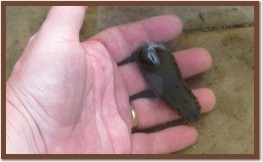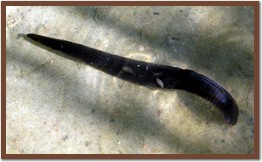
Biology of Leeches
Introduction
Usually when I write these sorts of articles it's about one or a few specific species of animal or plant, but I'm not familiar enough with any one species of leech, nor is there enough information on any one species to focus on, so this is an introduction to the group as a whole.
Description
Leeches are segmented worm-like creatures. They are usually flattened dorso-ventrally and have distinct suction disks (suckers) on either end of their bodies. They have a distinct head end with a mouth consisting of sharp cutting beaks located within the head sucker. Their rear sucker is larger and use to anchor the leech in place. Leeches have simple eyes which detect light and dark, rough shapes and motion.
Colour and pattern vary greatly from species to species, but most tend to be darker coloured with blotches, spots or stripes.
Classification
The classification of leeches is as follows.
Kingdom: Animalia
Phylum: Annelida
Class: Clitellata
Subclass: Hirudinea
Biodiversity
There are likely more than 700 species of leeches worldwide. In North America there are thought to be about 63 species, 24 of which can be found here in Manitoba.
Basic Biology
The majority of leeches live in fresh water habitats, but some inhabit salt water environments and some can live in moist terrestrial environments. They are hermaphrodites, possessing both sex organs in each individual, but they must cross-fertilize with another of their species to produce viable offspring. Two individuals will align themselves and inject each other with sperm. The resulting fertilized eggs are kept in a mucous cocoon which may be kept attached to the underside of the body or deposited in the environment.
Leeches get around by swimming in an undulating fashion, like a snake on its side, or by attaching and re-attaching their suckers in an inch-worm fashion. Watch the video below of a leech "inch-worming" along my hand:
Food / As Food
Food for most species of leeches is the blood of other animals; they are "hematophagous". Blood-sucking leeches are ambush predators that wait for larger animals to swim by, or move close in the case of terrestrial species, then they grab on to their prey. Razor sharp blades or beaks in the mouth cut a slot through which blood flows aided by anticoagulants and anesthetics to dull sensations at the wound. Large volumes of blood, up to several times the weight of the leech, can be stored in a crop (a widening of the alimentary canal) before digestion begins. When the leech has filled its crop with blood it releases its suckers and falls off. A large blood meal can last a leech for many months.
Some leech species eat other tissues on their prey, some are carrion feeders and some swallow small invertebrates whole. And lots of other critters will make a meal out of leeches: fish, turtles, shore birds, herons, etc. Leeches don't have it all their own way, they're just part of the food chain.
Economic Importance
As any fisher knows, leeches are a popular live bait to use when angling. A dozen large leeches could cost you three bucks or more. There isn't a current source of information on the overall economic value of leeches to economies in North America, but older references suggest that US states like Minnesota have leech industries that exceed several million dollars annually. Commercially sold leeches (usually The Predatory Leech, Nephelopsis obscura) are harvested from the wild (as are commercially sold Night Crawlers) and in some cases concerns have been raised of over-harvest of local populations.
Medicinal Leeches
A common European species of leech (Hirudo medicinalis) was once widely used medicinally for blood-letting. This practice was believed to restore the balance of "humours" within the body. While a questionable practice in general, modern medicine has found a valuable use for leeches. In the surgical repair or re-attachment of certain body parts and in skin grafts venous blood flow is often poor at first. Leeches are used to draw off excess blood accumulating in the tissues until new veins and capillaries regenerate. The natural anticoagulant that leeches produce as they feed also helps prevent clotting that could lead to loss of blow flow to the damaged regions.
Final Thoughts
Leeches are yet another of group of animals suffering from a "bad rap". Yes, they grab onto us and try to suck our blood, but they are just trying to make a living. And there's no real reason to fear their attacks. Leech bites are painless, only tiny amounts of blood are withdrawn and chances of any disease transmission are almost non-existent. Yet, hysteria still rains on beaches whenever some swimmer finds a leech on some body part. Remember, the attitude you display towards living things affects other people around you. Over-reacting to icky creatures imposes these attitudes on future generations. So, please, just relax, pick off the leech and flick it back into the water. Live and let live.
|
Thanks for learning about leeches! Bye for now!
| Please help NatureNorth produce more great articles with a secure donation through PayPal. To learn more follow this link: Support NatureNorth. Thank-you! | |
Return to: Fall Issue | NatureNorth Front page


